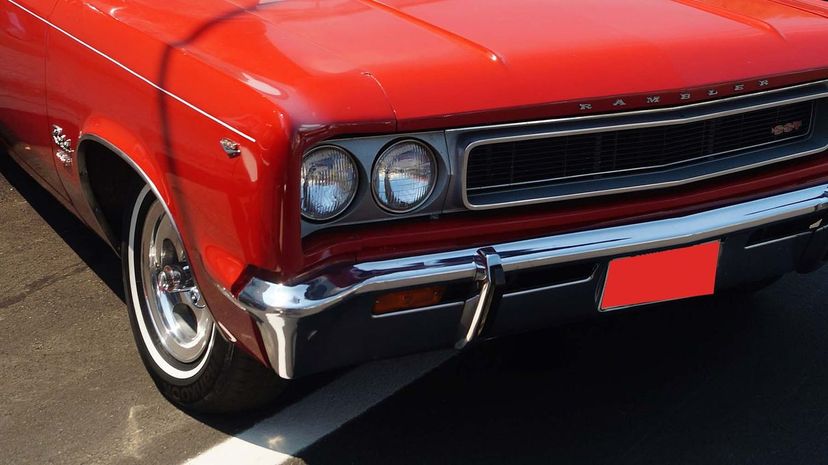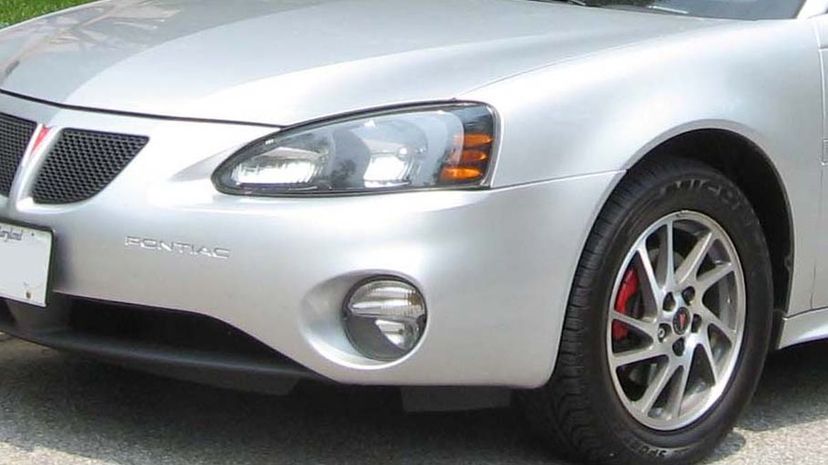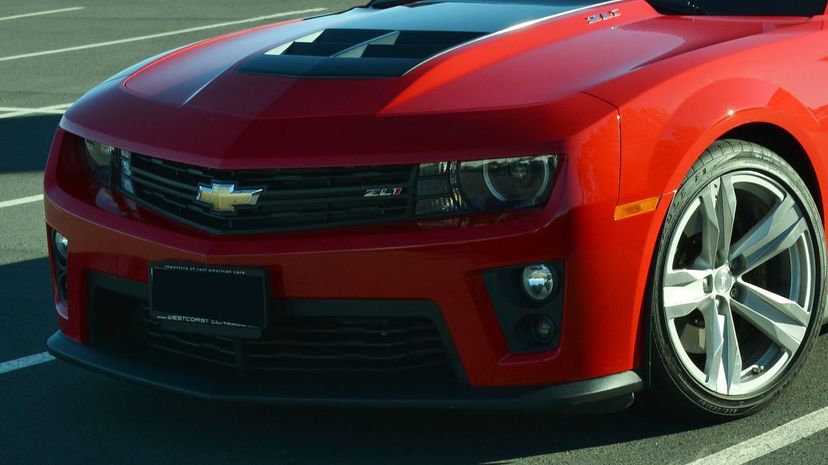
About This Quiz
Do you like the feel of adrenaline coursing through your body? Just like the racing heroes of old, you are lined up on the grid, waiting for the lights to go green! The sweat drips from your brow as you wait for what seems to be an eternity.
Fame, fortune and greatness lie just ahead. It's simple, really. All you need to do is identify a range of muscle cars from a close-up image. Sounds easy, right? Well, some might be obvious but others will test your muscle car knowledge to its fullest. And we have included muscle cars from different decades, from classics to more modern behemoths.
But what defines a muscle car, do you think? Well, without a doubt, you need to start with the engine. All muscle cars are mostly powered by the V8 engine. And then, there's the body. In the '60s, muscle cars were big, bold and brash, with most taking the form of a 2-door hardtop. Some convertible versions were available, and a fastback styling was also loved by enthusiasts. Modern muscle cars have kept that menacing look, too.
Although this quiz is not one of our easiest, as a car enthusiast, you should be able to at least score about 80%, right? So fly off the line, aim for glory and take the checkered flag first!

Arguably the most iconic muscle car ever, the Mustang was first released in 1964. It proved one of the most popular debuts ever and within a year, 400,000 units had been sold, which quadrupled Ford's sale estimates. The American auto giant has continued to offer the Mustang as a model and it is currently in its sixth generation.

The Rebel, particularly the 1970 models, took AMC straight into the muscle car fight. This was a real looker, blessed with a muscle car stance. With "Up with the Rebel Machine!†as AMC's slogan for their muscle car, simply called "The Machine" it was targeting the younger market. Of course, this muscle car had V8 power which produced around 340 hp.

A modern '60s throwback, this muscle car takes design features from all the classics and packages them together with a 6.4-liter V8 LS9 engine from General Motors which produces 640 horsepower. It will set you back a cool $250,000, however.
Advertisement

The 1972 455 Stage 1 Gran Sport Skylark received glowing reviews from many motoring publications. In fact, journalist Martyn L. Schorr paid the Gran Sport Skylark the ultimate compliment. He called it "one helluva street machine."

The Buick Grand National was an '80s muscle car that quickly challenged its more established rivals from Ford and Chevrolet, particularly the GNX edition. Produced in partnership with McLaren Performance Technologies, just over 500 were made. It produced over 300 hp.

The El Camino was produced by Chevrolet between 1964 and 1987. Despite the fact that it was a coupe/utility vehicle, the SS version was considered a muscle car and was powered by various big-block V8 motors. The El Camino offered something different in the muscle car stakes and found a niche market.
Advertisement

Pontiac produced some iconic names in motoring, especially with its GTO. The first models, released in 1964, were available in a convertible, hardtop and coupe. This was a serious muscle car and remains a firm favorite with enthusiasts today.

Although it was introduced in the 1950s by Dodge, it was the '60s models that muscle car enthusiasts loved. The 1969 model had what motor journalists called a muscle-car look, and with a 426-cubic inch V8 Hemi engine under the hood it certainly sounded the part.

Produced from 1962 to 1970, the Wildcat changed in looks pretty much every year. One thing that remained constant was the V8 engine found under the hood. The final model, produced in 1970, included a new 455 cubic inch V8 which produced 370 horsepower.
Advertisement

Built between 1959 and 1974, the Galaxie was so named to take advantage of the space race between the USSR and the United States. This vehicle was in direct competition to the Chevrolet Impala and included a few powerful models considered to be muscle cars, especially those with the Cammer V8 engine.

The most powerful muscle car ever built, the 2019 Hellcat produces an astonishing 707 horsepower thanks to its 6.2-liter supercharged V8 engine. The Hellcat's acceleration is incredible, and from a standing start, you will hit 60 mph in just 3.4 seconds.

Produced between 1973 and 1975, the Apollo from Buick was available as a 2-door coupe and hatchback and a 4-door sedan. The most powerful engine option available to the Apollo was a 350-cubic inch 5.7-liter V8.
Advertisement

Although the Skylark had been around since the 1950s, in 1965 Buick introduced the Skylark Gran Sport. It was available as a hardtop, coupe and convertible and powered by an engine produced for the first time in the 1950s: the Wildcat 455. This 401-cubic inch V8 engine produced 325 horsepower.

Many muscle car aficionados call the Chrysler 300 the first muscle car. No matter if you agree or not, the 300, introduced in 1955 and produced until 1965 certainly had the cool factor. The 300 nameplate was brought back late in the 20th century, but it was more of a sedan than a true muscle car.

The Buick GSX, introduced in 1970, was Buick's most widely lauded contribution to the muscle car wars. With a massive V8 under the hood, the GSX was quick, getting to 60 mph from a standing start in well under six seconds.
Advertisement

As one of Chevrolet's most successful models, the Chevelle was produced over two decades between 1964 and 1977. The largest engine put into a Chevelle was a 454-cubic inch big-block V8. The Chevelle Laguna was made famous by NASCAR legend Cale Yarborough.

The Grand Prix was built by Pontiac between 1962 and 2008. It underwent a number of cosmetic changes during its long production run but almost always had a number of V8 engine options to give it that muscle car appeal.

The fastback version of the Cyclone sold 6,105 models in 1968, which wasn't approaching Mustang numbers but respectable. The Cyclone was powered by a range of V8 engines including the 428-cubic inch Cobra Jet.
Advertisement

Introduced by Chevrolet in 1970, early models of the Monte Carlo are considered to be luxury muscle cars. This model competed for market share against the Pontiac Grand Prix and Buick Riviera.

The 'Cuda quickly became a popular muscle car from its release in 1964. In fact, it debuted two weeks before the Ford Mustang. Of course, later models featuring the Hemi engine are the most sought-after among car enthusiasts.

The Challenger was first introduced in 1970 as a muscle car. The top of the range model from this era was powered by a 6.98-liter Chrysler Hemi engine. Since its reintroduction in 2008, over 400,000 Challengers have been sold.
Advertisement

Modern muscle cars are very different from their '60s cousins. Take the CTS-V, for example, with a four-door layout. That said, It still breathes fire, and is powered by a 6.2-liter supercharged V8 that produces over 600 horsepower

Another vehicle that conjures the age-old question, "Is it a muscle car?" Well, the mid- to late '60s models certainly looked the part with their 2-door hardtop styling. And in terms of powerplants, the Oldsmobile Starfire included a massive 7.0-liter V8.

This modern 650-horsepower behemoth gets you from 0-60mph in just 3.5 seconds and clocks a top speed of just under 200mph. This is thanks to its 6.2-liter supercharged LT4 V8 engine. And what a looker!
Advertisement

Based on the Chevrolet Camaro chassis, the Pontiac Firebird was its own car and certainly caught the attention in the mid-1960s. The Firebird was powered by a range of engines including straight-six and V8s. Over 82,000 were sold in 1967, the first year of production.

Produced by the American Motors Corporation between 1968 and 1970, the AMX was a GT-style sports car. It featured a 2-door coupe-styled body and had six different engine options, all V8s of varying size. AMX's came with either a four-speed manual or three-speed automatic transmission.

The American Motors Corporation produced the subcompact class Gremlin between 1970 and 1978. A number of models were produced, but it was the Gremlin powered by either 5.0-liter or 6.6-liter V8 that are considered to be muscle cars.
Advertisement

Got $60,000 lying around? Then you can own a modern Shelby Mustang. This Mustang is powered by a 5.2-liter V8 Ford engine that propels it to 60 mph in just 3.7 seconds.

Perhaps one of the lesser-known muscle cars, the Rogue certainly had the credentials. Not only was it a lightweight two-door coupe, but it had all the power it needed thanks to a 280 horsepower-producing V8. Sadly, it was up against Mustangs, Camaros, and GTOs and never really stood a chance in that company.

The GTX was another performance model made by Plymouth and marketed at the more mature buyer. It was built between 1967 and 1971. Interestingly, it was first called the Belvedere GTX but that was later dropped. The GTX models had massive 7.0-liter engine options, including the famed Hemi.
Advertisement

Many credit Oldsmobile with the first muscle car way back in 1949. All we know is that the Cutlass 442, released in the mid-60s, certainly was one. The name stems from the four-barrel carburetor, the four-speed manual transmission and (almost required on '60s muscle cars) the dual exhausts.

The Impala SS was a model offered by Chevrolet between 1961 and 1969. The 1969 model was powered by a 427-cubic inch 7.0-liter V8 which produced 335 horsepower. The SS badge only disappeared until the 1990s.

The Gran Sport badge first appeared on the Buick Skylark in 1965. By 1967, it was a model of its own. In 1970, the company released the Grand Sport 455, considered by many experts to be one of the greatest muscle cars ever built.
Advertisement

One of the most famous brands of the Corvette is the Mk II Stingray, produced between 1963 and 1967. This classic had either a 2-speed automatic gearbox or 3-speed manual with a range of engine options including small and big-block V8s.

Created as a high-speed racing machine especially for NASCAR, the Superbird was also for sale to the public. The first models appeared in 1970 and were instantly recognizable thanks to the massive spoiler on the back. An upgrade of the Plymouth Road Runner, the Superbird was only produced for one year.

A performance version of the Valiant, the Duster was a fairly small vehicle for the time. It has a range of engine options and was produced by Plymouth until 1976. Its biggest engine was a 360-cubic inch V8.
Advertisement

Muscle cars quickly went from fast production cars to fast luxury production cars. The Road Runner was a step back to the early days of the muscle car. Released in 1968, the Road Runner gave buyers everything they wanted in a muscle car at a respectable price.

Produced between 1960 and 1977, the Ventura had all the characteristics of a muscle car: large engine options, the correct look and much more. The second generation, led by a 2-door coupe, certainly fit the bill.

A mid-sized car model produced by Ford from 1968 to 1976, the Torino's most popular layouts included the two-door sedan. Ford also produced a few Torino models with higher performance specs. Most were powered by 7-liter 'Cobra Jet' engine and are considered to be muscle cars.
Advertisement